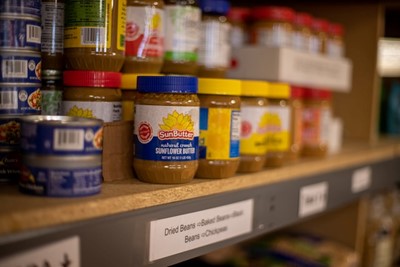Alan Belin is the founder of the Chicago Food Project, a non-profit organization that supplies fundraising and food services to those who need it most, in and around the Chicago area. In the following article, Alan Belin discusses the causes of food insecurities, and provides a few solutions to the problem.
Between the ever-looming housing crisis and perennial complaints about the insufficiency of minimum wage, poverty-stricken Americans face a vast array of problems. Among them, food insecurity continues to stand apart as an especially pronounced issue in need of solutions.
Alan Belin explains that millions of Americans wake up every day uncertain as to whether they can afford their next meal. Many live far from their nearest affordable source of sustenance, with limited mobility to help them acquire such needs as basic nutrition. However, better access to benefits and smarter use of food waste could theoretically address the issue.
While both the causes of and solutions to food insecurity warrant more thorough discussion, it’s first important to address the various levels of food insecurity currently suffered by far too many tax-paying citizens.
Classifying Levels of Food Insecurity
Alan Belin explains that food insecurity arises whenever individuals or families lack access to enough nutrition to ensure a sustainably healthy lifestyle. By contrast, people are considered food secure when the receive, or have access to, enough food to maintain daily health and activity without going hungry.
These two terms do not define clearly dichotomous states of existence. Rather, they coexist on a wider spectrum that encompasses a variety of experiences. To help understand various levels of both security and insecurity, Alan Belin explains how educational initiative Poverty USA breaks this spectrum down into four broad categories:
- High Food Security – People with no pressing food concerns whatsoever
- Moderate Food Security – Worry about food sometimes yet encounter no real struggles
- Low Food Security – Maintain regular diets yet lack variety and healthy choices
- Very Low Security – Forced to ration and suffer periods of involuntary fasting
Roughly 38.3 million Americans rank on the lower end of the spectrum, with disproportionate numbers of persons of color suffering particularly low food security. This figure ranks just 1.2 million shy of the entire population of California. Helping such a vast population may seem hopeless, but the solution begins with identifying the root of the problem.
Primary Causes of Food Insecurity
Alan Belin says that the greatest problem with identifying the causes of food insecurity is that it harkens back to the long-debated question of how the nation’s economy left so many behind in the first place. While many blame systemic racism, tolerance will not put food in people’s mouths. More practical root causes must be identified, some of which include:
- Poor urban planning resulting in “food deserts” located miles from affordable food sources
- Lack of mobility, whether in the form of personal or public transportation
- Low access to food pantries or other community resources
- Insufficient working wages among households with multiple dependents
While each of the above may be classified as contributing factors to food insecurity, low wages make a good prime candidate for identifying the leading cause. Individuals with accessible transportation who live within close proximity of affordable nutrition will still find themselves out of luck if unable to afford enough groceries to feed their families.
Meanwhile, Alan Belin says that food pantries only slap a bandage on the root problem. Many food banks pose limits on how often families and individuals may receive service within a set period of time. More importantly, they do not always provide real nutrition, relying simply on whatever food waste local stores chose to donate that week. More sustainable solutions must be identified.
 Seeking Solutions to Food Insecurity
Seeking Solutions to Food Insecurity
First, it’s important to note that issues of food insecurity will never disappear overnight. Solving hunger may be a great talking point for a Miss America contestant, but the best real policymakers can do is try to provide relief to as many people as possible. That effort needs to start with providing better access to government subsidies.
Alan Belin says that despite the fact that millions of households currently receive supplemental support in the form of SNAP benefits, many of them still rely on food pantries to receive a decent meal because SNAP does not provide enough to afford adequate nutrition.
Furthermore, while the nation wastes roughly a third of its food supply on average, only a small percentage of food approaching its sell-by date winds up in the hands of community pantries. Those who would gladly receive the rest of it for the sake of a decent meal must find it by digging through the trash themselves.
Finally, Alan Belin says that more than a quarter of those suffering food insecurity are children. In fact, the number of starving children in America out-measures the population of Manhattan. Better access to free school lunches could make a fairly respectable dent in at least this side of the issue.
Conclusion
Systemic poverty threatens the nutrition of millions of people every day. However, better access to government resources and reductions in unnecessary food waste could help a sizable percentage of the population. Until those with the power to enact change decide to do so, it falls on individuals to donate and volunteer where they can.



 Seeking Solutions to Food Insecurity
Seeking Solutions to Food Insecurity


